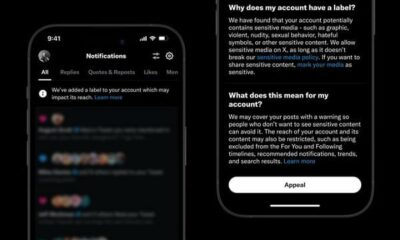PPC
Ad Fraud Warnings to Look Out for in 2022

Advertisers spend $455 billion in online advertising per year and $42 billion of it lost due to ad fraud in 2019, according to Juniper Research. In addition, the Wall Street Journal reported that 28% of all web traffic likely comes from “non-human” bots.
Why hasn’t ad fraud been stopped yet?
In short, it’s still difficult to detect.
Fraudsters are using far more sophisticated techniques today than in the earlier days of the web and a single advertiser can run millions of ad impressions across hundreds of websites, making it extremely difficult to spot irregularities at such a large scale.
It’s not a secret that ad fraud remains a major problem. But are advertisers aware of it and, if so, are they doing anything about it?
Fraud Blocker, a click fraud protection software, sent out a survey to PPC marketers to help answer some of these questions as they plan for their 2022 campaigns.
What is ad fraud?
Ad fraud is a means to defraud advertisers by using techniques that inflate the total number of ad clicks or views for financial gain.
With click fraud, malicious actors can employ robots or low-wage workers to repeatedly click on ads illegally. Unaware of the fraud, advertisers then pay for the clicks as if they were real humans with actual buyer intent.
Another type of ad fraud, impression fraud, is often done by serving ads in places that are invisible to the human eye. This can be done by stacking ads on top of one another, loading them in tiny iframes, or serving them in the background of a mobile application.
Here are a few of the most common types of ad fraud today:
- Ad Stacking: Multiple ads are stacked on top of one another where only the top ad is visible, however advertisers are charged for the non-viewable ads.
- Pixel Stuffing: A malicious publisher loads ads, or an entire website, inside a 1×1 pixel. The ads are non-visible to the human eye.
- Click Farms: Attackers hire a group of individuals whose job it is simply to click on ads throughout the day. Click farms use techniques that give the impression that each click is from a different user and device.
- Click Bots: One of the most popular methods of click fraud is done by web robots. These bots can be simple programs that click on ads repeatedly or they can be large operations that are installed with malware on user’s devices and click on ads unknowingly in the background.
- Location Fraud: The geographic location of ads are spoofed using a Virtual Private Network (VPN). This makes ads appear to be shown in a more desirable location, such as in the US, despite actually being shown in a less desirable country.
- Video Viewing Fraud: The popularity of video channels can be easily faked to appear more appealing to advertisers, much like social media followers. Advertisers ultimately end up paying based on the view counts which a large portion of may not be from real humans.
- Affiliate Ad Fraud: Fraudsters manipulate the cookies on a user’s device to wrongly credit an associated affiliate as the source of purchase without the user’s knowledge.
- Source Spoofing: The data detailing where an advertisement ran is altered to appear as a more trustworthy publisher or mobile app.
- Domain Spoofing: The domain name is changed to falsely appear as if the ad came from a more premium site, such as changing from junknewssite.com to WSJ.com.
Visit here for more details on the different types of ad fraud.
Ad fraud still remains a large concern for advertisers
In the new survey, PPC managers were asked about their awareness of ad fraud, their overall level of concern and, what role in marketing they held to see if there was any correlation.
The vast majority of all respondents, 70%, stated they were somewhat or very concerned about ad fraud.
The survey also showed that more experienced marketers had a larger concern about fraud. These particular respondents may be able to identify fraud more frequently due to their dedicated marketing and analytics experience relative to more general business owners and consultants.
Ad fraud continues to significantly impact campaign performance
All respondents to the survey had direct experience managing PPC ad campaigns and most of them reported seeing a large amount of fraud.
74% of those respondents experienced more than five percent of fraud in their ad campaigns and an incredible 11% of marketers experienced greater than 25% of fraud. Even a small amount of fraud can have a tremendous impact on an advertiser’s budget and performance.

The types of ad fraud, and their marketing channels, still vary wildly
Historically, click bots were often the most commonly mentioned type of fraud, but today the survey shows “ad stacking” and fraudulent URL sources as the most common problems for PPC managers.
Click bots and “pixel stuffing” were the third and fourth most commonly mentioned and over 10% stated that competitors clicking their ads was a major problem for them.

The respondents also experienced fraud across every channel in nearly the same amount. Even newer technologies, such as over-the-top streaming TV (OTT), reported sizable issues of ad fraud. This could be due to it having less mature ad tech that creates a greater potential for exploits.

Experienced marketers use third-party software to help prevent fraud
Eliminating ad fraud entirely can be very difficult, but advertisers can rely on a few techniques to help save their budgets and improve their performance.
The first is to simply follow best practices to help identify bots, such as adding a “honey pot” to lead forms, or by frequently monitoring data from clicks, views, and leads to find irregularities and then adjusting advertising campaigns accordingly. However, these require experienced marketers to be able to identify the bad data and it can be labor-intensive to frequently monitor and take action.
Another option is to rely on anti-fraud services provided by ad networks, such as Google Ads. This can be effective; however, there is often a conflict of interest the ad networks generate revenue from each click or impression regardless if it’s fraudulent. Reducing their fraud clicks thus reduces their revenue. Some ad networks also provide very little transparency of invalid activity in their reports and then the burden can be up to the advertiser to request reimbursements if fraud is discovered.
Some ad networks, such as Google Ads, provide “invalid clicks” in their campaign reports for advertisers, but one man sued Google after allegedly discovering his invalid clicks were far greater than what the Google reports were showing.
When the survey respondents were asked if they believed Google Ads blocked click fraud, only half of the respondents, 49%, believed Google did. This should be a major consideration for advertising in 2022.

The final option is to use a dedicated, independent ad fraud detection software. There are several players on the market that can help advertisers detect, block fraud in real-time and the survey showed that about 50% of advertisers use these services, or have considered using one.

Overall, the results of this survey indicate the prevalence of fraud in advertising campaigns today is still very high. As marketers plan for 2022 they should consider taking action against this fraud to improve their ad performance and extend their ad budgets.
Methodology
The Fraud Blocker survey was conducted by Pollfish and concluded on December 1, 2021. It was sent to a randomized group of PPC marketers and media buyers in the US and UK who purchased digital advertising in the prior 24 months. 200 respondents completed the survey. Pollfish is a leading survey company with a pool of over 480 million mobile audience members worldwide that participate in their surveys.

















You must be logged in to post a comment Login